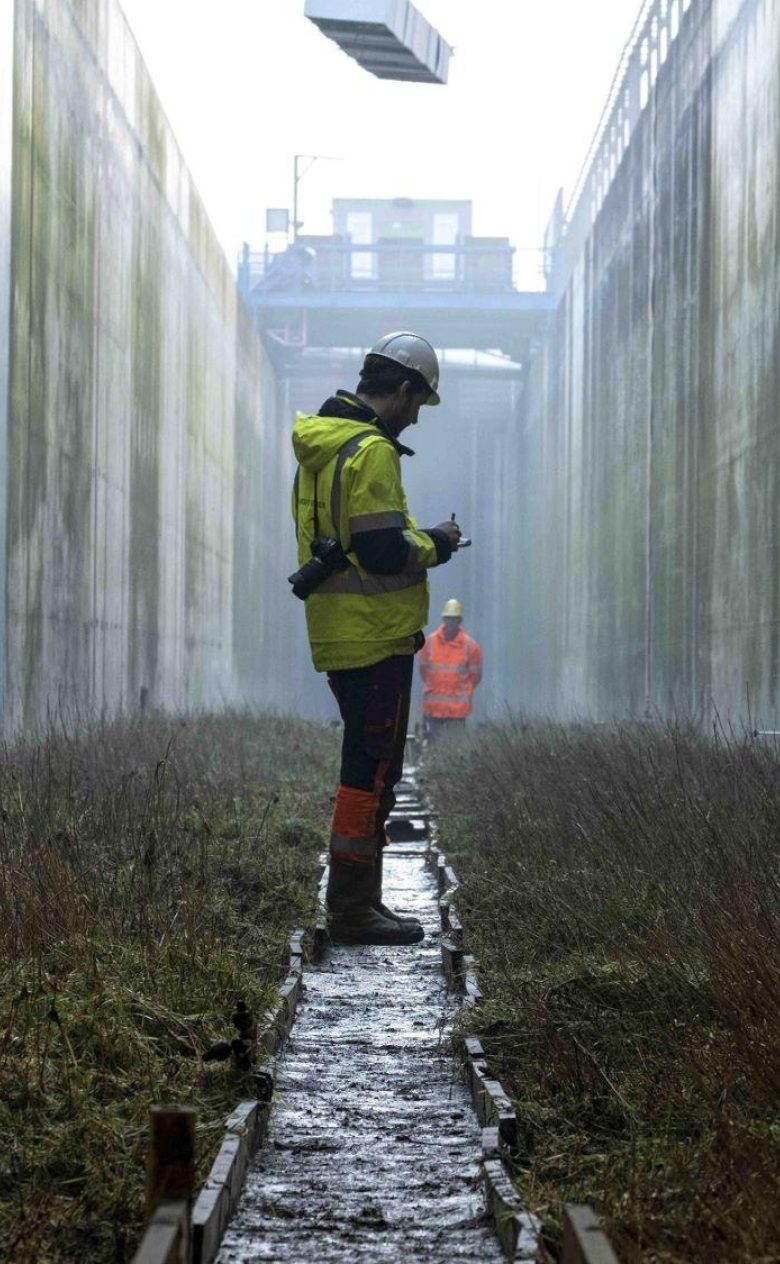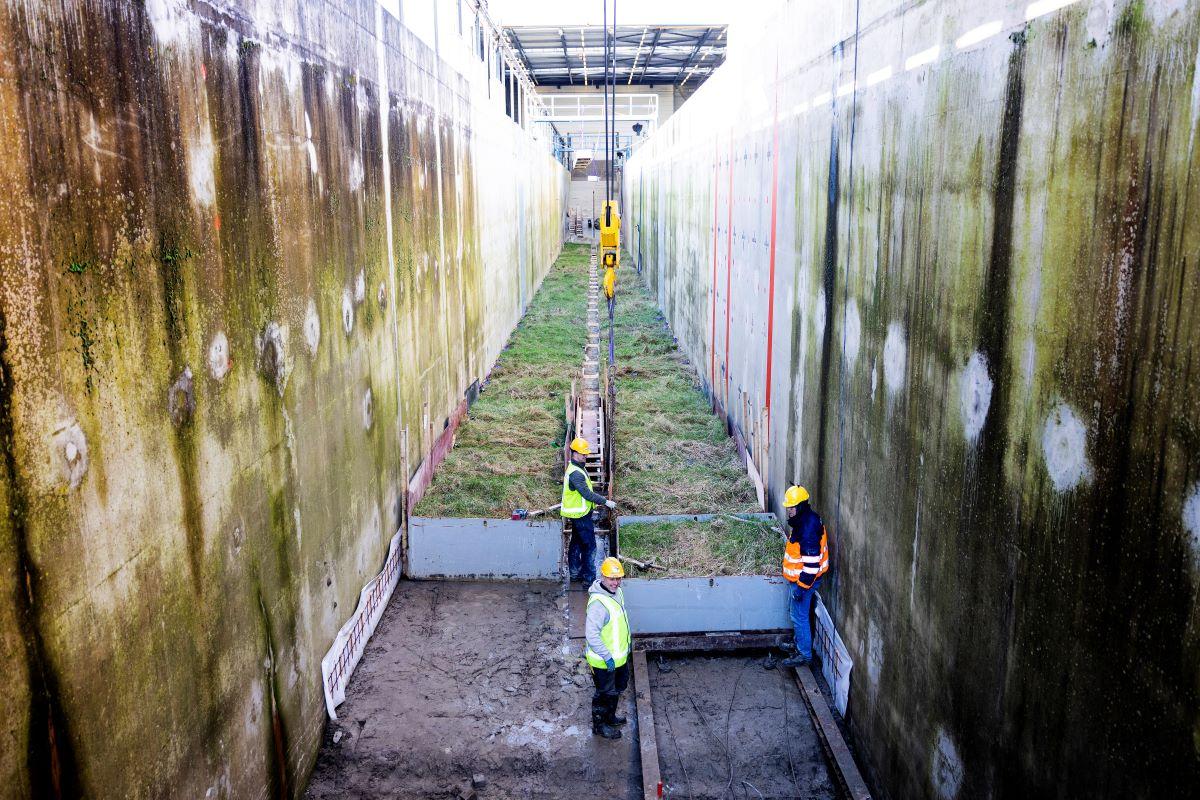Q&A with Barry Ros, project manager for the Fryslân water authority
'A green dike looks better in the salt marsh landscape than a strip of asphalt.’
Learn moreWhat effect does salt marsh vegetation have on the force of waves reaching the dyke? Together with Deltares, University of Twente and TU Delft and NIOZ, Wetterskip Fryslân is investigating the effect of salt marsh vegetation and open foreland on the force of waves reaching the dyke. As a result, a dyke may need less space and salt marshes could potentially contribute to flood protection in the Netherlands. The research is funded by HWBP.

In Wetterskip Fryslân's working area, there are many dykes with foreland: the salt marshes. A salt marsh is a strip of land outside the dyke that borders directly on the sea. Salt marshes overgrown with seaweed, a blue-grey grass species, can make an important contribution to the dyke's flood defence function.
Scientific research already shows that salt marshes contribute to the flood defence function of the dyke. Besides the height of the salt marsh, the vegetation can reduce the wave load on the dyke. The waves reaching the dykes are expected to be less powerful due to the high vegetation.
And another advantage: the vegetation can retain silt - fine clay particles - from the Wadden Sea, allowing the land in front of the dyke to grow along with sea level rise. And that offers new solutions for the High Water Protection Programme: smart use of these vegetated areas could reduce dyke heights, widths and dyke coverings.
You have not yet indicated whether you want to accept or reject cookies. This means that this element cannot be displayed.
Or go directly to:
In September 2023, the water board removed blocks of soil from the outer dyke salt marsh east of the village of Peazens-Moddergat in Friesland. The blocks of soil were taken to the Delta Flume in Delft for investigation. A total of about 270 square metres of soil were excavated. This amounts to 68 containers of soil, each measuring 2 by 2 metres and 40 to 70 centimetres thick.
In early 2024, the blocks were carefully lifted into the five-metre-wide trough using a crane. Colleagues in the gutter pulled away the walls and placed wooden beams to firmly hold the blocks together. They were pushed firmly together with a powerful winch to have no gaps anywhere, with a walkway in the middle to inspect and maintain the vegetation until the test starts.
'Then we inspected the salt concentration of the blocks, it is essential to keep them in a good condition. The aim is to mimic a salt marsh situation as normal as possible,' says Vera Bergeijk, expert on floods and dykes at Deltares. 'Taking care of the blocks requires a lot of attention, so we spray them with salt water. We also occasionally put a wind machine on them and special lights, to simulate the conditions of the salt marsh. They are situated in the channel in such a way that we can see the effects of waves arriving perpendicularly.'
'In the Delta Flume, we simulated a superstorm,' says Van Bergeijk. 'We built a ten-metre-high dyke and lay the blocks of salt marsh grass in front of it. We take various measurements. With wave height meters, we measure the reduction of wave height above the salt marsh with vegetation. This allows us to measure the wave-damping effect of the salt marsh vegetation. We also look at the erosion process of the salt marsh soil. When does the salt marsh vegetation break down and wash away the clay under the vegetation? And what effect does the height of the vegetation have on the dyke load?' Students, PhDs and postdocs from TU Delft, University of Twente and NIOZ assist with the measurements and analyse the data collected.
The Delta Flume is ideally suited for this research because it can take measurements at full scale, under extreme conditions. Van Bergeijk: 'If you do a measurement in the field, often everything happens simultaneously and that is difficult to measure. And we hardly ever have a sufficiently severe storm that produces high waves. In the Delta Flume, we can easily raise the water level or waves in steps. We can change a parameter each time, giving us better insight into the process. You need that to develop formulas that can be included in risk calculations of dykes.
The tests took place in February and March. Each day there were several tests. 'We are also going to do measurements on the dyke itself. The waves hit the dyke and we measure the forces these waves cause on the dyke embankment.' Blocks with grass or clay have been used in the Delta Flume before; the uniqueness of these measurements is that blocks with salt marsh vegetation have not been tested before.

Preliminary results show that salt marsh vegetation does indeed reduce waves on the dike. It is only 5% at the highest water levels and slightly more at the lower water levels, but because dike reinforcements are so expensive, this still represents a considerable cost saving for the dike reinforcement projects along the Zeeland coast and Wadden coast.Furthermore, vegetation has been shown to prevent erosion at the dike at all during such a superstorm, saving an expensive toe construction at the connection of the dike to the salt marsh.
Rijkswaterstaat and the water authorities are facing the largest dyke reinforcement operation ever. More than 1,500 kilometres of dykes and 500 sluices and pumping stations have to be tackled until 2050. This will only succeed with a new view of the Dutch dyke and dyke reinforcement. It has to be faster, better and more efficient. This is done in the High Water Protection Programme (HWBP), a dyke reinforcement programme for which the Netherlands is allocating €13.7 billion. This innovation research on the effect of salt marsh grass is funded by the High Water Protection Programme.